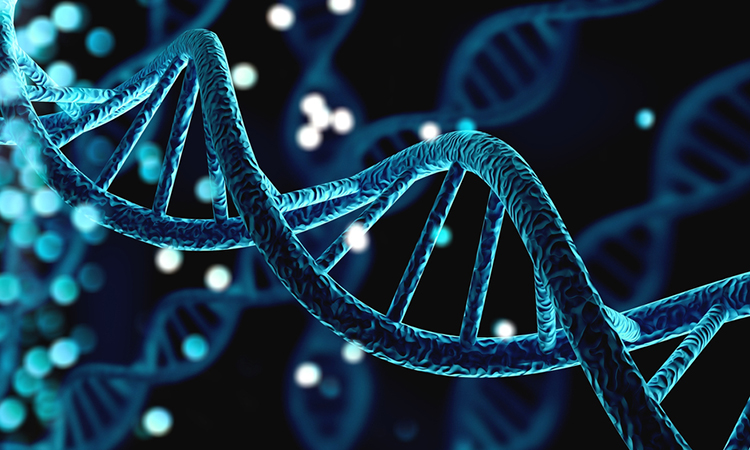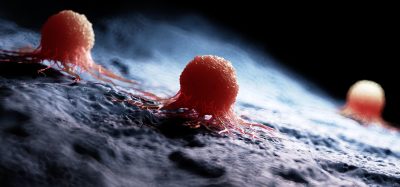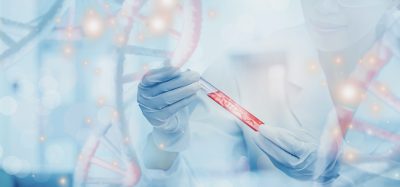New study uncovers DNA repair mechanism in bacterial cells
Posted: 19 May 2023 | Izzy Wood (Drug Target Review) | No comments yet
US research reveals mechanism used by bacterial cells to repair their faulty DNA, which could help scientists understand the intricacies of DNA repair processes.


A new study, from New York University’s (NYU) Langone Health and School of Medicine, US, has revealed a novel mechanism by which bacterial cells repair faulty sections of their DNA. The findings shed light on a DNA repair pathway that counters the inclusion of ribonucleotides, a certain type of molecular building block, into genetic codes. This discovery has significant implications for the understanding of DNA repair processes and could have far-reaching clinical applications.
DNA replication in bacteria and other organisms is prone to mistakes, particularly during the code-copying process. Ribonucleotide misincorporation, the erroneous inclusion of ribonucleotides instead of deoxyribonucleotides, can lead to detrimental changes in DNA code and DNA breaks. To counteract these errors, all organisms have evolved a DNA repair pathway called ribonucleotide excision repair (RER), which promptly fixes such mistakes.
In a previous study led by Dr Evgeny Nudler from NYU Langone Health, researchers examined DNA repair in living E. coli cells and discovered that damaged code sections were identified by a protein machine called RNA polymerase. RNA polymerase, responsible for transcribing DNA instructions into RNA molecules, also served as a platform for the assembly of a DNA repair machine known as the nucleotide excision repair (NER) complex. NER would then remove the faulty DNA and replace it with an accurate copy. The team found that little or no NER occurred in living bacteria without the action of RNA polymerase.
The new study, published in Cell, presents the first evidence that the RER pathway is closely connected to transcription, similar to the NER pathway. The researchers found that the key enzyme involved in RER, RNaseHII, cooperates with RNA polymerase as it scans DNA chains in living bacterial cells for disincorporated ribonucleotides. These findings challenge established principles in the DNA repair field and open up possibilities for investigating whether RNA polymerase triggers repair genome-wide, not only in bacteria but also in human cells.
One of the challenges in understanding RER was how RNaseHII identifies rare ribonucleotide lesions among the vast amount of intact DNA codes. Using cutting-edge techniques such as quantitative mass spectrometry, in vivo protein-protein crosslinking, and cryogenic electron microscopy (CryoEM), the researchers mapped the interactions between RNaseHII and RNA polymerase in living bacterial cells. By determining the key surfaces of these proteins, they revealed the protein-protein interactions that define the RER complex. Genetic experiments that weakened the interaction between RNA polymerase and RNaseHII compromised RER, further supporting the proposed model.
According to Zhitai Hao, a post-doctoral scholar in Nudler’s lab and the first study author, the findings suggest that RNaseHII scans DNA for ribonucleotide errors by riding on RNA polymerase as it moves along the DNA chain. This crucial work not only enhances our fundamental understanding of the DNA repair process but also holds significant clinical implications.
Nudler and Julie Wilson Anderson Professor in the Department of Biochemistry and Molecular Pharmacology at NYU Langone Health, expressed excitement about the results, stating that they inspire a revaluation of established principles in DNA repair research. Moving forward, the team plans to investigate whether RNA polymerase scans DNA for various problems, triggering repair on a genome-wide scale, not only in bacteria but also in human cells.
The study’s findings have profound implications for our understanding of DNA repair mechanisms and their potential application in clinical settings. As further research unfolds, it may lead to the development of innovative strategies to prevent and treat DNA-related disorders in both bacterial and human cells.
Related organisations
New York University’s (NYU) Langone Health, NYU School of Medicine
Related people
Dr Evgeny Nudler, Zhitai Hao








